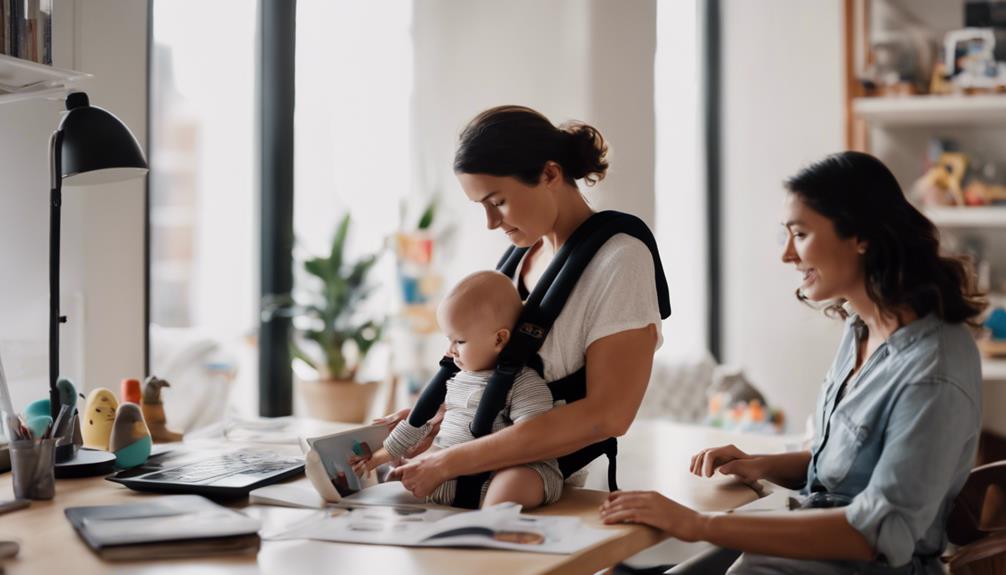When homeschooling with a baby, utilize babywearing for hands-free care and bonding. Create a baby-friendly learning area with educational materials easily accessible. Include engaging videos and toys that focus on early learning concepts. Divide lessons into manageable blocks and take advantage of naptime for teaching. Maintain flexibility in your schedule to balance caregiving and teaching. Promote sibling interaction to foster family unity. Assign older siblings tasks that involve nurturing the baby’s learning. Establish a nurturing home environment with structured routines and open communication. By optimizing your setup and routines, you can effectively homeschool with a baby at your side.
Key Takeaways
- Utilize babywearing for hands-free care and bonding during homeschooling.
- Create a baby-friendly learning area within your homeschooling space.
- Opt for short, focused learning sessions aligned with the baby's schedule.
- Balance caregiving and teaching by incorporating naptime for focused lessons.
- Foster sibling interaction and bonding to create a supportive family learning environment.
Babywearing During Lessons
When homeschooling with a baby, consider incorporating babywearing during lessons for hands-free care and bonding opportunities. Babywearing not only allows you to attend to your little one's needs while teaching but also provides them with comfort and security. Wrapping your baby close to you promotes bonding and creates a sense of closeness that can enhance your teaching experience.
By using a baby wrap or carrier, you can multitask effectively, tending to your baby while engaging in educational activities. This hands-free approach enables you to move around freely, keeping your baby secure while you focus on teaching. The gentle swaying motions as you move can also create a calming environment, aiding in your baby's development and fostering a sense of security.
Embrace the practice of babywearing during your homeschooling sessions to optimize your time together. Not only does it facilitate your caregiving responsibilities, but it also strengthens the bond between you and your baby, making learning moments even more special.
Designated Learning Area Setup
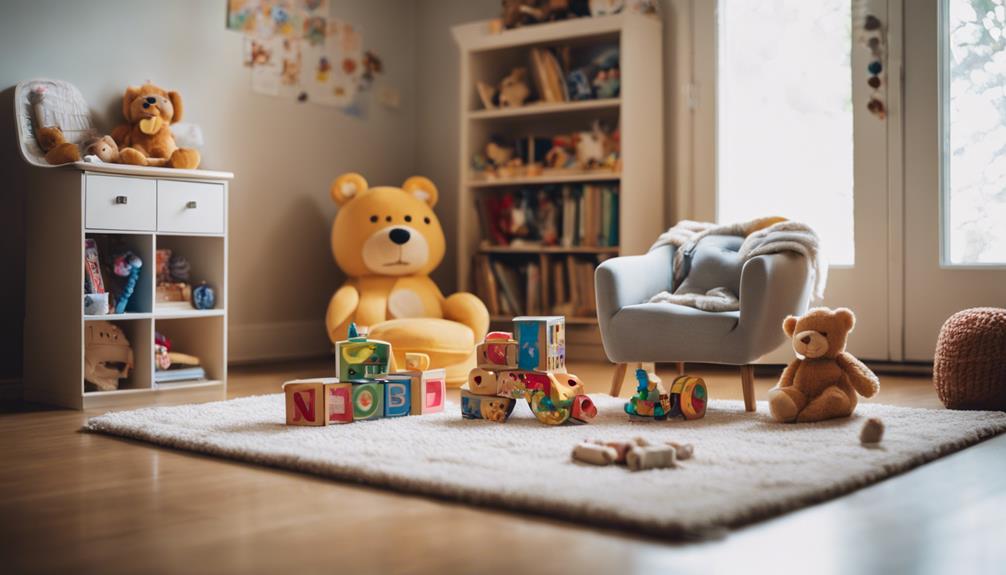
When establishing your designated learning area for homeschooling with a baby, make sure you create a baby-friendly space that's safe and engaging. Organize the room to have educational materials easily accessible for older children while also providing a cozy and stimulating area for your little one.
Baby-Friendly Learning Space
Designing a baby-friendly learning space involves setting up a designated area in your home that caters to both homeschooling and keeping your baby entertained and safe. To create a cozy environment, consider incorporating safe and engaging toys within arm's reach.
Organize materials in a way that's easily accessible, allowing you to grab what you need while tending to your little one. Make sure the space is baby-proofed, minimizing disruptions during your homeschooling sessions.
By setting up a playpen or play area within the learning space, you can keep your baby entertained while focusing on teaching older children. A well-thought-out learning space not only promotes a positive atmosphere for homeschooling but also ensures your baby's safety.
Embrace the challenge of balancing both roles by establishing a nurturing and secure environment where learning can thrive alongside baby care.
Organization and Accessibility
For an efficient homeschool setup, designate a specific area in your home that is well-organized and easily accessible for effective learning. When homeschooling with a baby, time is precious, and having a designated learning space can save you valuable minutes searching for materials. Keep all necessary materials within arm's reach to prevent interruptions during lessons. Consider utilizing storage solutions like shelves, bins, and organizers to maintain a clutter-free environment. Here's a table to help you visualize the key aspects of organizing your homeschool area:
| Organization | Accessibility |
|---|---|
| Keep materials tidy | Have items within reach |
| Utilize storage solutions | Minimize distractions |
| Create a functional space | Easy access to resources |
| Use visual aids | Maintain a clean area |
Educational Videos and Toys
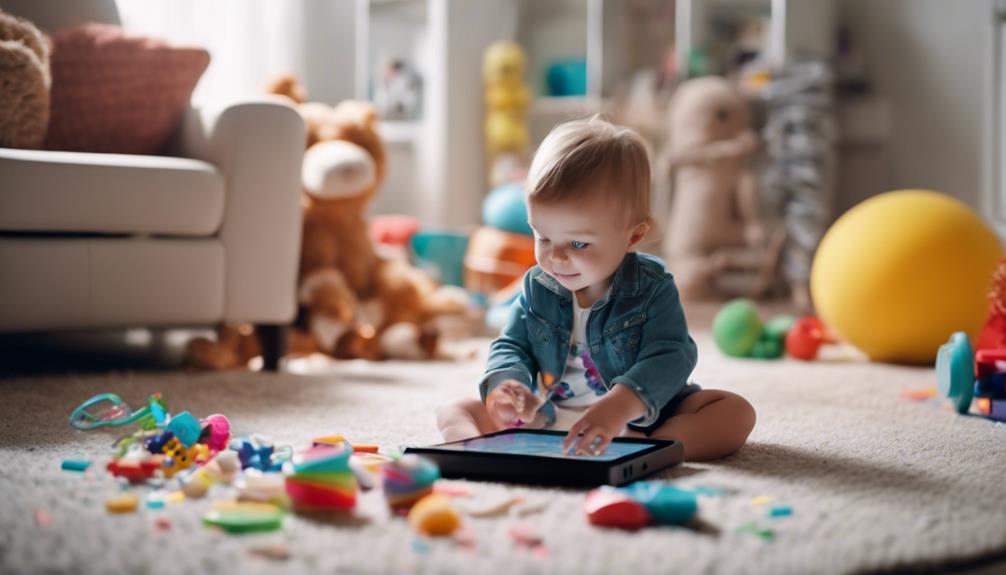
When incorporating educational videos and toys into your homeschool routine with a baby, remember to choose engaging content that focuses on early learning concepts.
Opt for interactive and stimulating toys that promote cognitive skills, sensory exploration, and fine motor development for your little one.
Choosing Educational Videos
You can enhance your homeschooling experience with your baby by carefully selecting educational videos that stimulate cognitive development and sensory skills. Educational videos like Baby Einstein offer engaging content designed to captivate your little one's attention while aiding in their overall development. These videos can be valuable tools for homeschooling with a baby, providing a fun and interactive way to introduce new concepts and skills.
Incorporating educational videos not only benefits your baby but can also involve and entertain older siblings, creating a shared learning experience for the whole family. By choosing videos that focus on cognitive development and sensory skills, you can guarantee that your homeschooling sessions are both educational and enjoyable for everyone involved.
Remember to vary the selection of educational videos to keep things interesting and cater to different learning styles. By incorporating a mix of engaging content and interactive tools like swings and mats, you can create a dynamic homeschooling environment that fosters growth and development in your baby.
Selecting Age-Appropriate Toys
Consider selecting age-appropriate toys that cater to your baby's developmental needs, ensuring a well-rounded approach to their growth and learning. Choose educational videos like Baby Einstein to provide engaging and suitable content for your little one. Opt for toys that stimulate sensory development, such as soft books, rattles, and textured balls. These items can help enhance your baby's tactile exploration and sensory awareness.
When selecting toys, look for options that promote cognitive skills. Stacking rings, shape sorters, and activity gyms are great choices to encourage problem-solving and cognitive development. Additionally, interactive toys that introduce cause and effect relationships, like musical instruments and light-up toys, can be both entertaining and educational.
Prioritize toys that assist in fine motor skill development. Grasping toys, nesting cups, and building blocks can help strengthen your baby's hand-eye coordination and manual dexterity. By incorporating these age-appropriate toys into your homeschooling routine, you can create a stimulating environment that supports your baby's overall growth and learning journey.
Short, Focused Learning Sessions
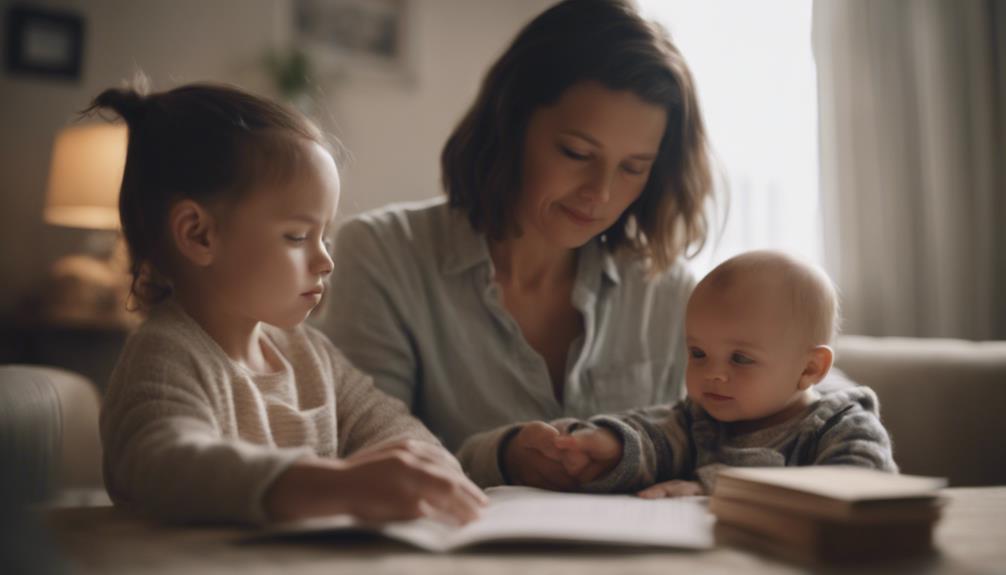
To effectively homeschool with a baby, prioritize short, focused learning sessions tailored to your child's age and attention span. When planning your homeschooling sessions, consider these tips:
- Break Sessions Into Blocks: Divide learning into manageable chunks, around 15-20 minutes for younger kids and longer for older children.
- Utilize Naptime: Take advantage of your baby's naptime for concentrated teaching moments when distractions are minimal.
- Keep It Engaging: Make lessons interactive to captivate your child's interest during these short bursts of learning.
- Adjust to Your Baby's Schedule: Be flexible and align your teaching pace with your baby's routine to maximize productivity.
- Stay Focused: Maintain a clear focus during sessions to make the most of the limited time you have for homeschooling.
Balancing Caregiving and Teaching
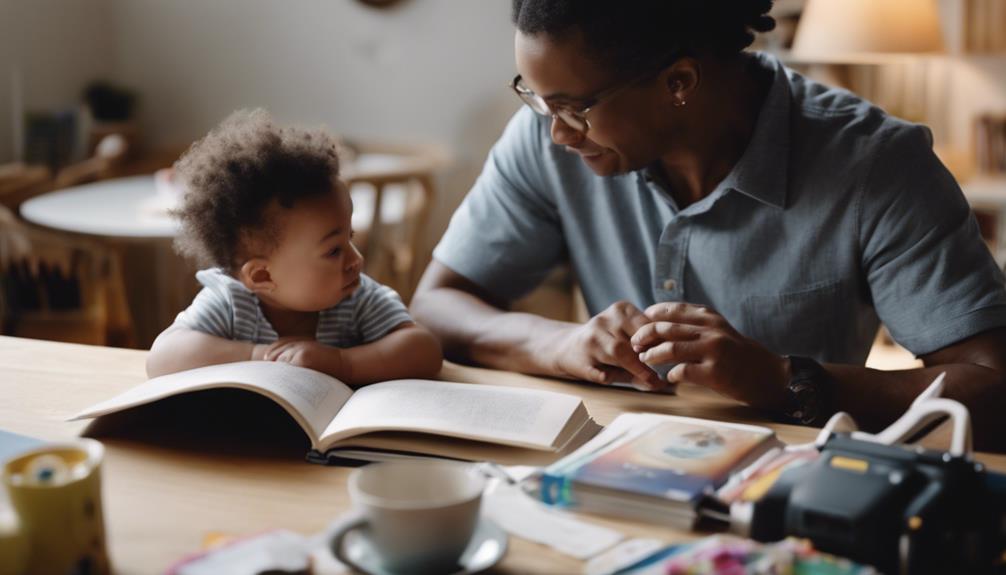
Prioritize flexibility in your homeschooling schedule to effectively balance caregiving and teaching responsibilities. Being a homeschooling parent with a baby means juggling multiple tasks, but adjusting your routine to fit your baby's needs can make a significant difference.
Use naptime as your golden opportunity for focused teaching sessions and educational activities. Creating a designated play area in your homeschooling space can keep your baby engaged while you guide older children through lessons.
Consider using a baby carrier or wrap for hands-free caregiving while you teach, allowing you to move around and attend to your baby's needs without interruption. Don't forget about self-care – taking care of yourself is essential for maintaining the energy and patience required for caregiving and teaching.
Engaging Baby and Older Children
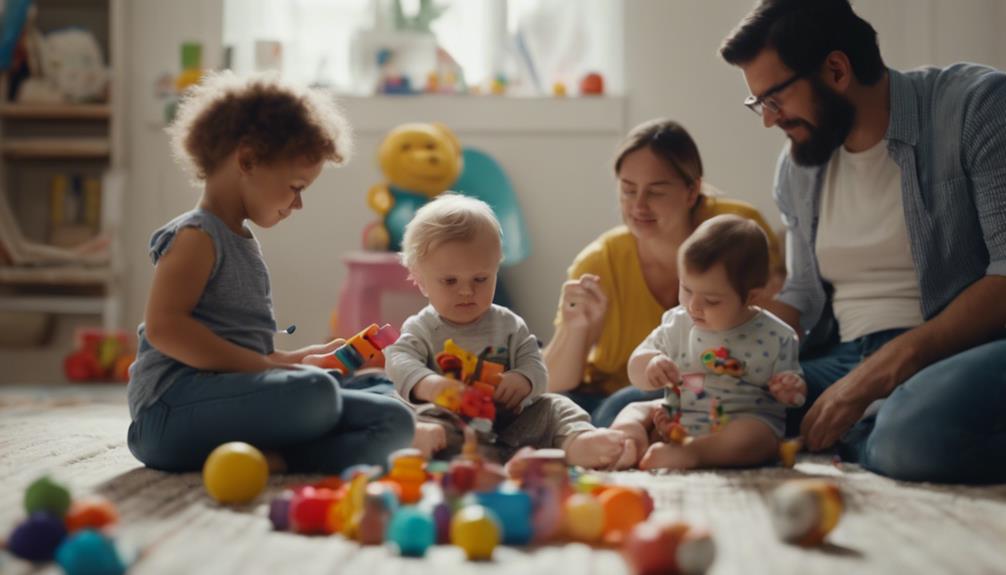
Get older children involved in teaching and assisting younger siblings during homeschooling sessions to encourage bonding and shared learning experiences.
To engage the baby and establish a harmonious learning environment, consider the following tips:
- Designated Play Area: Create a special corner in the schoolroom with engaging toys to keep the baby entertained while you focus on teaching.
- Special Toys: Utilize toys that aren't only fun but also aid in the baby's development and sensory exploration.
- Bonding with the Baby: Encourage older siblings to interact with the baby, fostering a sense of family unity and teamwork.
- Teaching and Assisting: Assign tasks to older children that involve guiding and helping the baby during homeschooling activities.
- Home Environment: Maintain a nurturing and supportive atmosphere for all family members, ensuring a positive learning experience for everyone involved.
Frequently Asked Questions
How Do You Homeschool When You Have a Baby?
When you homeschool with a baby, maximize naptime for lessons, incorporate activities during feeding times, set up a play area, stay flexible, and use a baby carrier for hands-free care. Balance and adaptability are key.
How Do I Start Homeschooling My 1 Year Old?
Starting homeschooling your 1-year-old involves creating a flexible schedule tailored to their routine. Use naptime for focused learning and incorporate interactive activities. Remember to be patient and nurturing, making education a fun journey together.
How Do I Keep My 1 Year Old Busy While Homeschooling?
Keep your 1-year-old busy while homeschooling by setting up a play area with toys, using swings and mats, involving them in short learning activities, engaging in sensory play, and utilizing naptime for focused teaching.
What Is the Most Popular Homeschool Method?
The most popular homeschool method is eclectic homeschooling, combining various educational philosophies. Traditional homeschooling, following a structured curriculum, is also common. Charlotte Mason method emphasizes living books, nature study, and short lessons. Unit studies and online homeschooling are widely used.
Conclusion
Incorporate engaging activities to instill interest and ignite learning in your little ones.
Remember, with patience and persistence, you can create captivating and creative homeschooling experiences for both your baby and older children.
Embrace the chaos and cultivate a cozy, collaborative environment where education evolves effortlessly.
Let love lead the way as you navigate this new educational journey with your growing family.

